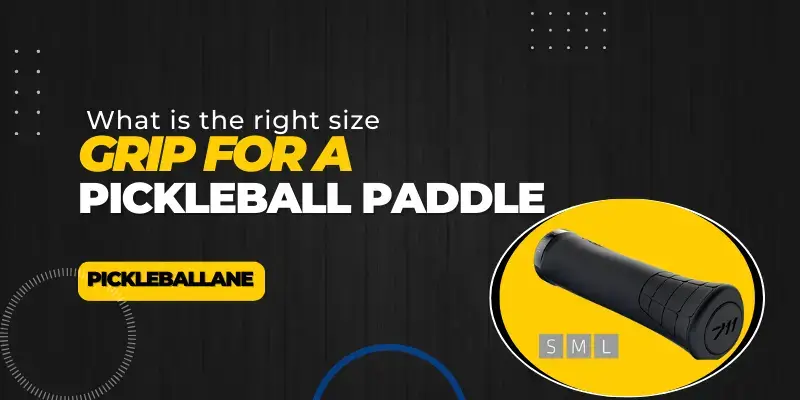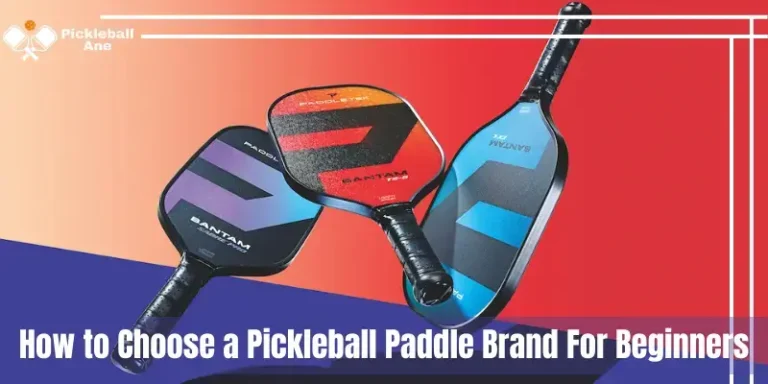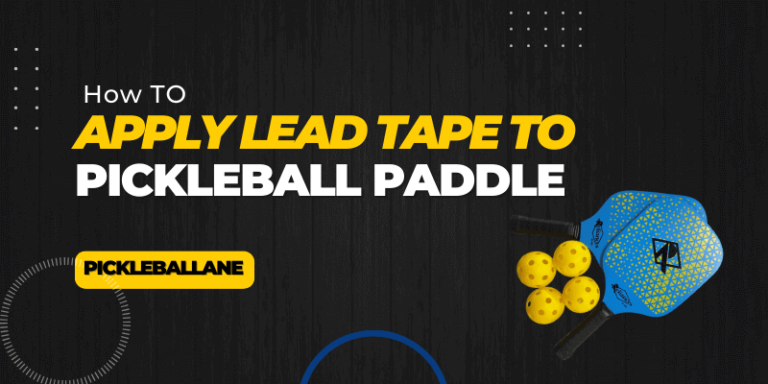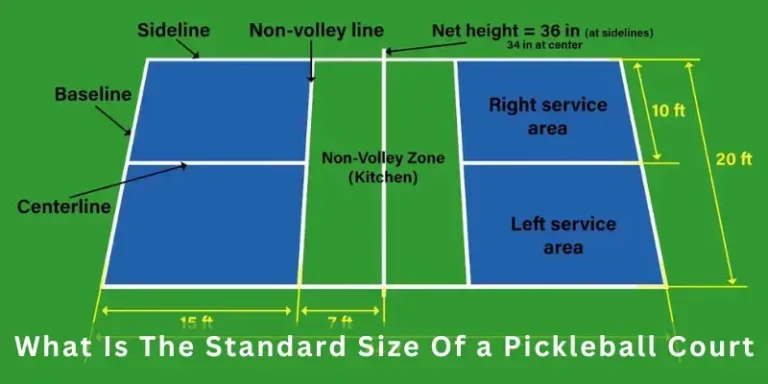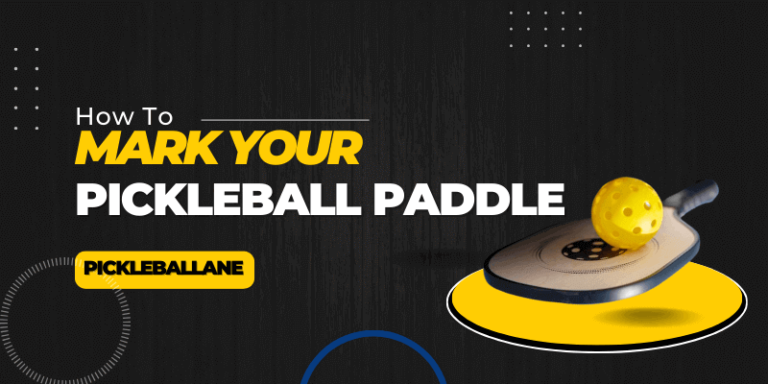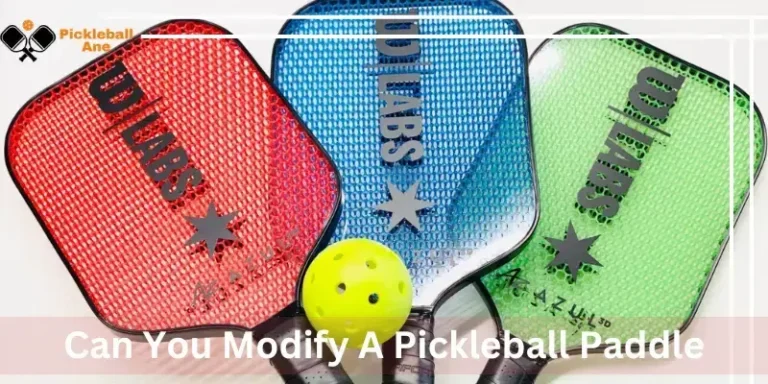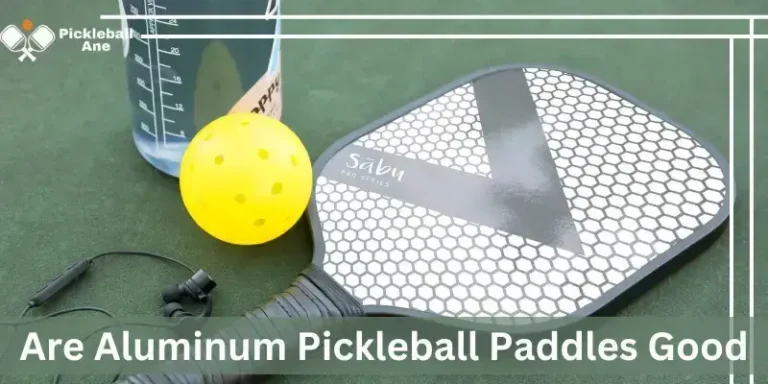What is the right size grip for a pickleball paddle | Different Grip
Finding the right grip size for your pickleball paddle is crucial for both performance and injury prevention. But with so many options available, how do you know which one is best for you?
The right size grip for a pickleball paddle is essential for comfortable and effective play. It should fit your hand comfortably and allow for a strong hold on the paddle, providing better control and accuracy in your shots.
In my experience, the right size grip for a pickleball paddle is essential for a comfortable and effective game. I have found that a grip size of 4 1/4 inches works best for me. However, I have also noticed that it may vary based on individual preferences and playing style. It’s important to try out different sizes to find the one that suits you best.
In this article, we will discuss the significance of the right size grip for a pickleball paddle and how to determine which one is best for you.
We will also explore some tips on choosing the perfect grip size and maintaining it for optimal performance.
So Let’s Dive in,
What Is The Right Size Grip For A Pickleball Paddle?
The right size grip for a pickleball paddle is crucial for comfortable and effective play. Incorrect grip size can lead to discomfort, muscle strain, and even injuries such as blisters or tennis elbow.
Generally, pickleball paddles come in three different grip sizes: 4 inches, 4 1/8 inches, and 4 1/4 inches.
These sizes refer to the circumference of the grip, measured from the top of your thumb to the top of your index finger when holding the paddle.
How to choose the perfect grip size – Factor To Consider
There are a few factors to consider when choosing the perfect grip size for your pickleball paddle:
1: Hand Size
The primary factor to consider is your hand size. A grip that is too big or too small can affect your playing style and cause discomfort.
Measure the circumference of your hand from the middle crease of your palm to the tip of your ring finger to determine the appropriate grip size for you.
2: Playing Style
Your playing style also plays a role in determining the right grip size for your pickleball paddle. If you tend to have a more powerful swing, a larger grip may provide better control and stability.
On the other hand, a smaller grip may be suitable for players who prefer finesse and quick wrist movements.
3: Comfort
Ultimately, comfort should be the deciding factor when choosing the right grip size. It should feel natural and allow for a strong hold on the paddle without causing any discomfort or strain.
4: Adjustability
Some pickleball paddles come with adjustable grip systems, allowing players to change the grip size according to their preference.
This feature can be beneficial for players who have not yet found their perfect grip size or for those who want more versatility in their game.
5: Grip Materials
The material of the grip can also affect the overall feel and comfort. Rubber or cushioned grips tend to provide better shock absorption and protection against discomfort.
Importance Of Grip Size For Pickleball Paddle
The right size grip for a pickleball paddle is not just about comfort, it also plays a significant role in performance.
A properly sized grip allows players to have better control and accuracy in their shots, leading to more consistent and powerful gameplay.
Moreover, the right grip size can help prevent injuries such as blisters or tennis elbow. It distributes the pressure evenly on your hand and reduces strain on your muscles and tendons.
Maintaining The Perfect Grip Size
Once you have found the perfect grip size for your pickleball paddle, it is essential to maintain it for optimal performance. Here are a few tips:
1: Keep It Clean
Dirt and sweat can accumulate on the grip, affecting its texture and grip. Wipe your paddle after each game with a damp cloth to remove any dirt or residue.
2: Use Overgrips
Overgrips are thin, absorbent wraps that can be placed over the grip to provide additional cushioning and maintain a consistent grip size.
They are inexpensive and can be easily replaced when worn out.
3: Replace When Necessary
Grips tend to wear out over time, losing their texture and becoming slippery. Replace your grip every few months, depending on the frequency of use, to maintain optimal performance.
4: Store Properly
When not in use, store your pickleball paddle in a cool and dry place to prevent any damage to the grip.
Common Grip Sizes And Their Pros And Cons
As mentioned earlier, pickleball paddles come in three different grip sizes: 4 inches, 4 1/8 inches, and 4 1/4 inches. Here are the pros and cons of each size:
4 Inches
Pros:
- Ideal for players with small hands
- Allows for a tight grip and quick wrist movements
Cons:
- May not provide enough cushioning for players with larger hands
4 1/8 Inches
Pros:
- A good balance between control and comfort
- Suitable for most hand sizes
Cons:
- May not provide enough control for players with larger hands
4 1/4 Inches
Pros:
- Provides the most cushioning and shock absorption
- Suitable for players with larger hands or those who prefer a more powerful swing
Cons:
- May feel too bulky for players with smaller hands
Expert Tips For Maintaining A Secure Pickleball Paddle Grip
Here are some expert tips for maintaining a secure pickleball paddle grip:
Expert Tip 1: Keep A Spare Grip
It’s always a good idea to have a spare grip on hand in case your current one wears out unexpectedly. This way, you can continue playing without any interruptions.
Expert Tip 2: Rotate Between Multiple Paddles
If you own multiple pickleball paddles, consider rotating between them during games or practices. This not only helps maintain the grip, but it also allows for a variety in play and lets you become familiar with different paddle styles.
Expert Tip 3: Use Grip Enhancers
If you struggle to maintain a secure grip during games, consider using grip enhancers such as liquid chalk, pine tar, or tacky spray. However, be sure to check if these are allowed in tournaments or official matches.
Expert Tip 4: Practice Proper Technique
Lastly, practicing proper technique can also help maintain a secure grip on your pickleball paddle. This includes using proper hand positioning and grip strength to reduce strain on your muscles and tendons.
Conclusion
In conclusion, choosing the right grip size for your pickleball paddle is crucial for both comfort and performance. Consider your hand size, playing style, and adjustability options when selecting a grip size.
Maintaining the perfect grip size requires proper cleaning and replacement when necessary. Follow these tips to ensure your pickleball paddle’s grip stays in top condition for optimal gameplay.
Also, don’t be afraid to experiment with different grip sizes to find what works best for you. With the right grip size and proper maintenance, you can take your pickleball game to the next level.
FAQs
How do I know my grip size for a pickleball paddle?
To determine your grip size for a pickleball paddle, take an accurate measurement of your hand around the palm (from thumb to fingertip). This will give you an idea of the size grip you need. It is important to make sure that the grip size provides enough control and power for your shots while also being comfortable.
How do you pick a pickleball grip?
When picking a pickleball grip, it is important to consider comfort, technique, and your hand size. You should look for a grip that provides both power and control while still being comfortable. It is also recommended to try out different sizes and textures until you find one that works best for you.
What is the difference between 16mm and 14mm pickleball paddles?
The main difference between 16mm and 14mm pickleball paddles is the amount of power they provide. A 16mm paddle has a larger head size, which is beneficial for those who are looking to generate more power in their shots while sacrificing some control. On the other hand, a 14 mm paddle has a smaller head size and offers increased control but less power.
What is the difference between thick and thin pickleball grips?
The main difference between thick and thin pickleball grips is the amount of cushioning and support they provide. A wider grip provides more cushioning which can help reduce arm fatigue, while a thinner grip offers better control of the paddle. It is essential to find a grip that is comfortable for you in order to play you.

